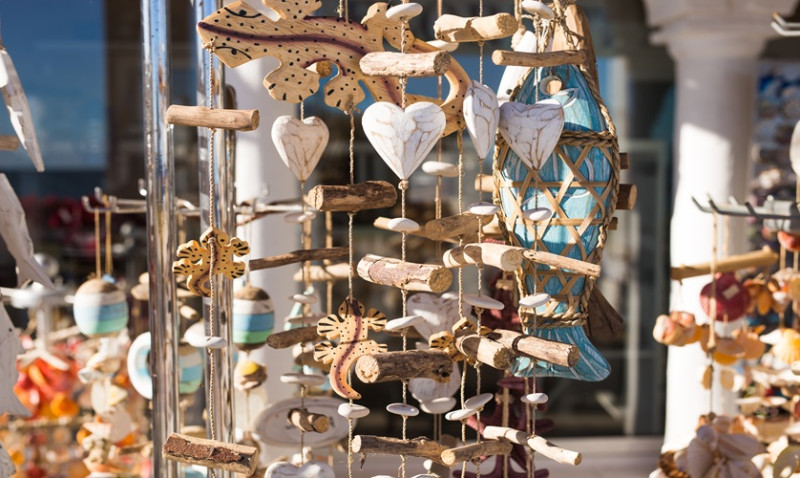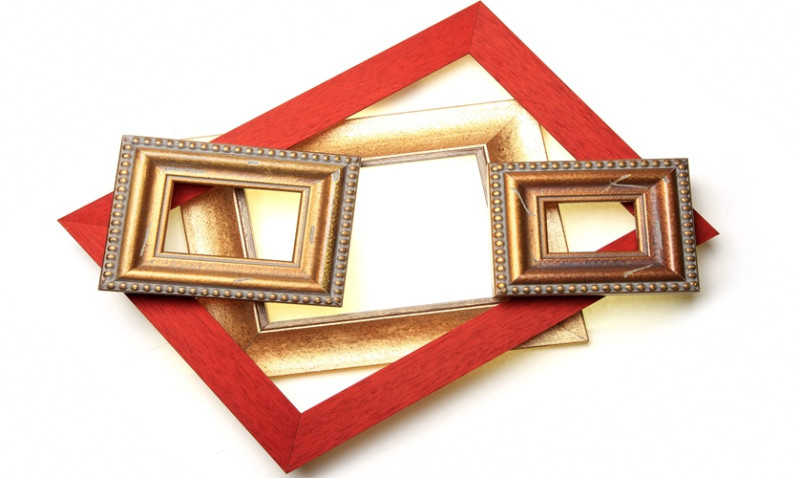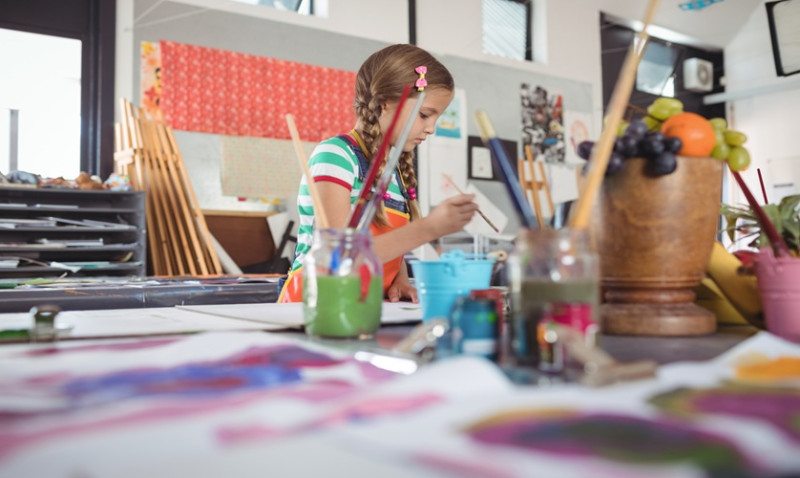
Attending your first art fair or art market as a creator or exhibitor is an exhilarating milestone. Whether you're a DIY home décor enthusiast, an independent artist looking to showcase your work, or even a designer exploring fresh artisan products for your next interior project, there’s a lot to consider to ensure your art fair experience is a success. From preparation and presentation to sales and networking, making the right decisions can directly impact your visibility and profits. Here are our top 10 essential tips to help you shine at your first art festival or art market in the UK.
1. Choose the Right Art Market for Your Work
Not all art fairs are created equal. Some cater to high-end collectors, while others are better suited to emerging artists or local crafters. Research each fair’s target audience, location, costs, and existing exhibitors. Does your artwork align with their niche? Would your style appeal to the type of people who typically attend?
If you’re a DIY or home décor artist, look for community-based craft and maker’s markets. Architects and interior designers may prefer curated design-led markets or contemporary art shows. Read reviews, visit the market before registering (if possible), and ask past exhibitors about their experiences.
Also, consider the logistics: Will you have easy access to parking? How far will you need to travel? Can you stay overnight if the event is far from home? Logistics can become major stressors if not taken into account upfront.
And don't forget to check the current regulations or requirements regarding public events, especially if you're dealing with regional market licenses or insurance.
2. Master Your Booth Presentation
Your booth is your shop window — it should instantly communicate your aesthetic, quality, and personality. Visual merchandising is key, so think like a retail designer. Use consistent branding, strong focal points, and good lighting to make your space inviting.
Think in layers. Hang wall art at eye level, include shelving or crates to create tiered displays, and lay out your smaller items to encourage browsing. If you’re showing prints or paper goods, have them in high-quality sleeves with backing boards. For 3D items like ceramics or candles, use props to simulate how items look in a home setting.
Bring your own lighting — daylight can be unpredictable, especially in UK venues. Battery-powered LED spotlights or clip-on lamps work wonders to highlight fine details, even under a canopy or in indoor halls with poor lighting.
Also, don’t bring everything you’ve ever made. Curate pieces that work well together and suit the tastes of your intended audience. Too much clutter can overwhelm visitors and dilute your brand identity.
3. Price Your Work Strategically
Pricing artwork is one of the trickiest aspects for creators. Underpricing not only devalues your work but also discourages serious buyers. Overpricing can discourage casual browsers from making impulse purchases. Aim for a balanced pricing structure that includes a range of accessible and more premium pieces.
Factor in your materials, labour, overhead, and time. Look at what similar creators at your chosen market charge. Are you pricing way below or above them, and why? Higher-end art fairs may support more luxury pricing, while community craft events may favour affordably priced prints and small works.
Offering multiple price points — such as original canvases, limited edition prints, and postcards — is a smart way to appeal to different buyer types. Architects and interior designers, for instance, may be interested in larger custom works, while DIY renters could be drawn to budget-friendly framed prints to style their flats.
4. Accept Multiple Forms of Payment
People rarely carry cash these days, and being unable to accept card payments can lead to lost sales. Equip your booth with a reliable card reader such as SumUp, Square, or Zettle that connects to your mobile phone via Bluetooth.
Test your device before the show. Ensure the venue has decent mobile signal or Wi-Fi access. Some markets provide Wi-Fi hotspots — find out in advance and come prepared.
It’s also a good idea to have a small float of coins and notes in case someone pays cash. Presentation matters here too: a tidy, secure cash box adds professionalism and builds trust.
Consider offering Apple Pay, Google Pay, or QR code payments — an increasingly popular choice for tech-savvy customers and young professionals who prefer a quick, contactless experience.
5. Tell the Story Behind Your Art
People buy stories as much as they buy products. Use your display to share insight into your creative process, inspiration, and identity. Whether you work with reclaimed materials, explore themes of nature or culture, or donate a portion of your profits to charity — let your audience know.
Include eye-catching signage with short bios, process shots, or quotes that capture the essence of your brand. If possible, demonstrate your process live or use a video loop on a tablet stand to showcase how your work is made. This is especially appealing to those who value authenticity and craftsmanship, such as interior designers or trade professionals seeking artisanal quality.
Conversations are key. Be friendly but never pushy. If someone lingers, ask them what caught their eye or if they’re decorating a new space — you’d be surprised how many sales start from a gentle conversation, not a hard pitch.
6. Have a Professional Marketing Setup
First impressions matter. Having professional marketing materials boosts your legitimacy and makes it easier for attendees to remember and recommend you after the market.
At the least, bring business cards, price tags, and a sign with your name or business. Better still, include printed leaflets or postcards that showcase your portfolio, website, and social handles. Use QR codes for quick and easy access to your online presence.
If you sell large pieces or made-to-order items, have a brochure ready for architects and designers to keep for future reference. For example, include size charts, frame options, and commission information for bespoke projects.
Make sure your branding is consistent across everything — from your booth banner to your Etsy shop and social media accounts. When customers return home to browse your work online, it should all feel like one seamless experience.
7. Make Setup and Transport Easy
Don’t underestimate the physical effort required in doing an art fair. Your vehicle, equipment, furniture, and display items need to be compact enough to transport but sturdy enough to survive a day outdoors or in a high-traffic venue.
Invest in collapsible tables, portable shelving, stackable crates, and heavy-duty trolley wheels. Always bring cable ties, duct tape, scissors, spare batteries, and extension cords. Prepare for weather changes — especially in the UK — by bringing waterproof covers, plastic sleeves for prints, clip-on canopy weights, and tarpaulin sheets if outdoors.
Label all your bins and boxes for quick unpacking and repacking. A well-organised setup will save you time and mental energy on the day.
Finally, pack yourself a lunch, water bottle, and a folding chair. Standing all day is tiring and you may not have time to grab food, especially if the event gets busy!
8. Build Your Mailing List
An art market is more than just a place to sell — it’s an opportunity to build long-term connections. Even if someone doesn’t buy, engaging them on your mailing list allows you to stay in touch and promote future products or markets.
Set up a clear and GDPR-compliant sign-up form using a clipboard, tablet, or QR code. Encourage sign-ups with a giveaway, discount code, or exclusive early access to new collections.
Trade visitors like architects or designers may be hesitant to buy on the day but very interested in bespoke collaborations later. Providing a clear next step through your mailing list keeps you top of mind.
9. Engage on Social Media Before and After
Promote your attendance on Instagram, Facebook, Threads, and Pinterest. Use the market’s hashtags and tag their accounts to reach more attendees. Post behind-the-scenes shots as you prep your booth or create new stock to build anticipation.
During the event, do live stories or Instagram reels showing your booth and your product highlights. Feature visitors (with their permission), and invite followers to come down and meet you in person.
Afterwards, thank attendees for coming and share your favourite moments. Ask online followers who picked up your work to tag you in photos — it’s great user-generated content and shows your art in real-life spaces.
10. Learn, Reflect, and Improve
No matter how your first fair goes, it’s a goldmine for insight. Take notes — what sold best? What questions did customers ask repeatedly? What didn’t sell, and should it be retired or reworked?
Speak to your fellow traders. The art market community in the UK is incredibly supportive, and you can pick up invaluable tips from those more experienced. Perhaps they know of upcoming shows, local supply discounts, or ideas you’ve not considered.
Track your finances. Make a simple table listing event fees, transport costs, and total takings. This helps you analyse profitability and decide whether to return the following year.
Finally, pat yourself on the back. Doing your first market is a huge achievement. With experience and refinement, your booth performance and business confidence will steadily grow.
Final Thoughts
Whether you're an artist, home décor creative, or professional trade looking to market original pieces, art fairs are a brilliant way to test new markets, connect with buyers, and elevate your brand visibility. By following these tips, you'll give yourself the best chance to stand out and succeed in the vibrant UK art scene.
Looking for display solutions or bespoke signage for your next art fair? Explore our collection specifically designed for independent traders and makers. Make your first fair the start of something special.






